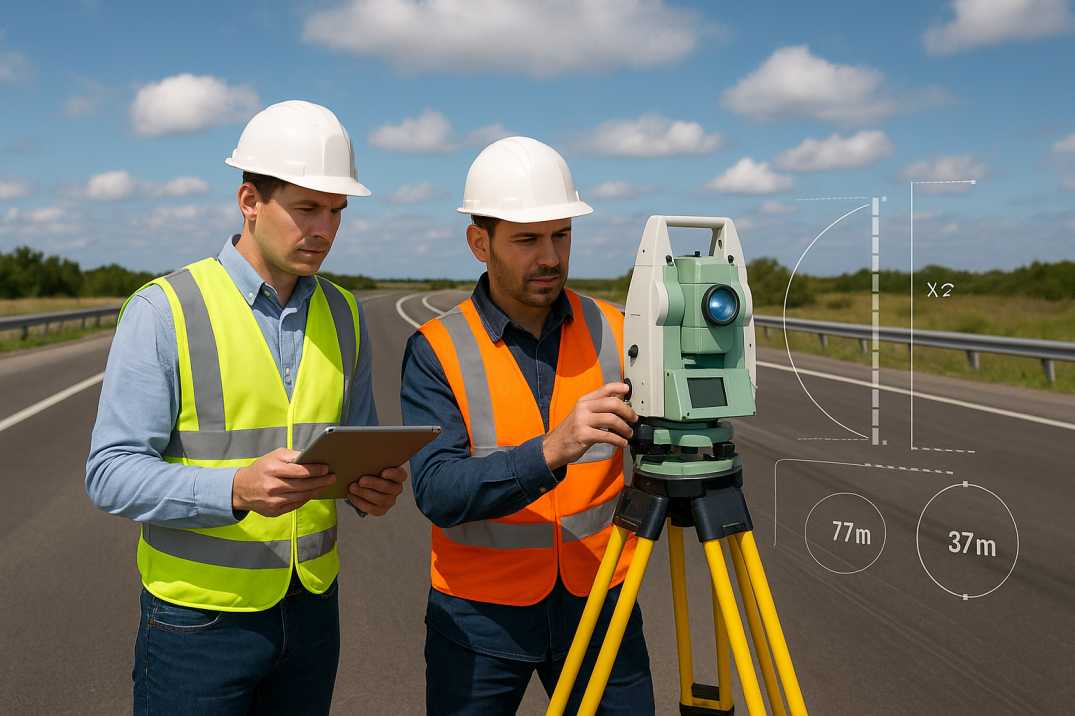Contact Us
RoadVision AI
Private Limited
Office No. 308 & 310, B Block
Ansal Chamber - 1, Bhikaji Cama Place,
Near Engineers India Limited (EIL) Bhawan, New Delhi - 110066
© 2024 | RoadVision AI | All rights reserved
Highway design in India is governed by strict guidelines laid down by the Indian Roads Congress (IRC). Among them, IRC 72 vertical curve requirements are crucial because vertical curves ensure smooth and safe transition between different gradients of a road. Proper vertical alignment directly impacts visibility, safety, and driver comfort. With the adoption of automated road asset management and AI road condition monitoring, engineers now have advanced tools to design and maintain curves that comply with official safety standards.
According to road geometric design standards IRC, vertical curves are essential to provide adequate stopping and overtaking sight distance. Poorly designed curves compromise road safety, increase accident risks, and reduce driver confidence. The integration of AI-based road safety audits and monitoring systems ensures compliance while improving design efficiency.

IRC 72 specifies that vertical curves must be designed to provide comfort and visibility without abrupt gradient changes. These requirements focus on:
The regulations emphasize that curves must balance structural safety, design economy, and user comfort. Incorporating driver comfort on vertical curves is not just a design choice, but a mandatory safety standard.
Safety in road alignment design is one of the key goals of IRC. Improper vertical alignment leads to sudden braking, poor visibility, and increased accident rates. Crest curves require sufficient length so that drivers can see oncoming vehicles, while sag curves must be designed for adequate illumination from headlights during nighttime travel.
Modern AI-based road safety technologies integrate real-time monitoring and digital simulations to validate curve safety before implementation. These approaches help engineers ensure that every curve meets national safety guidelines.
Traditional methods of curve design relied heavily on manual surveys and assumptions. Today, automated road asset management systems and AI road condition monitoring provide high-precision measurements, digital modeling, and predictive analysis for vertical curve compliance.
Benefits include:
Driver comfort on vertical curves is a critical factor that influences road usability and accident rates. IRC guidelines recommend curves that reduce abrupt accelerations and ensure smooth vehicle motion. Excessive or insufficient curvature leads to discomfort, unsafe overtaking, and higher accident potential.
With the adoption of AI-based road safety tools, designers can simulate driver experience under different conditions, ensuring roads are safer and more efficient for public use.
Vertical curve design is at the heart of IRC 72 safety standards. By complying with IRC 72 vertical curve requirements and using automated road asset management and AI-based road condition monitoring, engineers can enhance safety, improve driver comfort on vertical curves, and ensure long-term compliance with road geometric design standards IRC.
RoadVision AI is revolutionizing the way we build and maintain infrastructure by leveraging the power of AI in roads to enhance road safety and optimize road management. By utilizing cutting-edge roads AI technology, the platform enables the early detection of potholes, cracks, and other road surface issues, ensuring timely maintenance and improved road conditions. With a mission to create smarter, safer, and more sustainable roads, RoadVision AI ensures full compliance with IRC Codes, empowering engineers and stakeholders to make data-driven decisions that reduce costs, minimize risks, and improve the overall transportation experience.
If your projects demand advanced AI-driven compliance and safer road design, book a demo with us today.
Q1. Why are vertical curves important in road design under IRC 72?
They ensure proper sight distance, smooth gradient transitions, and safer driving conditions.
Q2. How does AI help in curve compliance?
AI enables real-time monitoring, digital modeling, and predictive safety analysis for road alignment.
Q3. What role does driver comfort play in vertical curve design?
Driver comfort ensures smooth travel, reduces fatigue, and lowers accident risks on crest and sag curves.